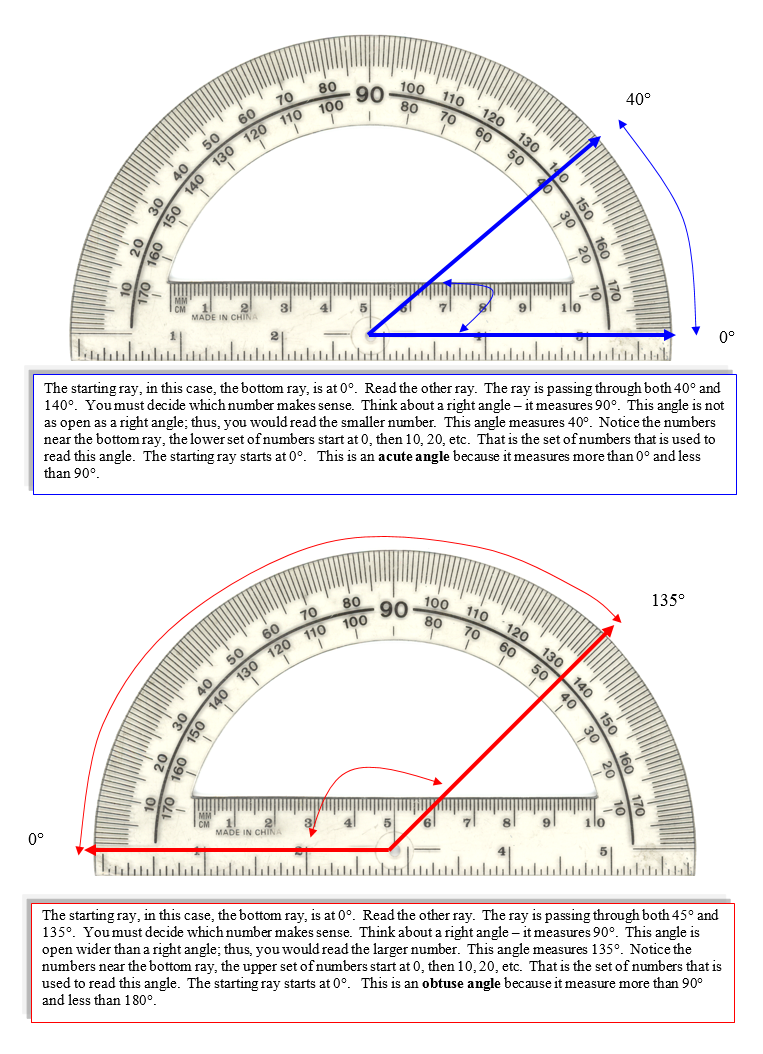
MEASURING ANGLES
CLASSIFYING TRIANGLES AND TRIANGLE PROPERTIES
To measure angles we use a protractor which is divided into 180 units to represent 180°. The protractor has two sets of numbers so that the angle may be measured from either the right or left, depending on which way the starting ray is pointing. If the starting ray is pointing to the left, read the top numbers; if it is pointing to the right, read the bottom numbers.
Two types of angles are acute and obtuse. Acute angles measure less than 90°, while obtuse angles measure more than 90° and less than 180°. Two special angles are the right angle, which measures exactly 90°, and the straight angle which measure exactly 180°. First we’ll measure and identify angles. We will use a protractor to measure angles and we will refer to benchmark angles to aid in making reasonable measurements of angles.
Triangles also have classifications. Triangles may be classified according to the angles found within the triangle. When classifying triangles by angles, triangles may be identified as acute, obtuse, or right triangles.
The three angles in a triangle share a special connection. The sum of the angles in a triangle adds up to 180°.
Another type of classification of triangles is determined by the length of the sides of the triangle. When classifying triangles by the length of their sides, triangles may be identified as scalene, isosceles, or equilateral.
 |
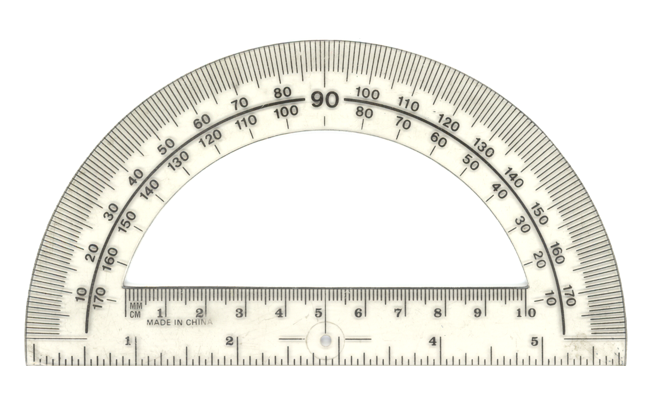 |
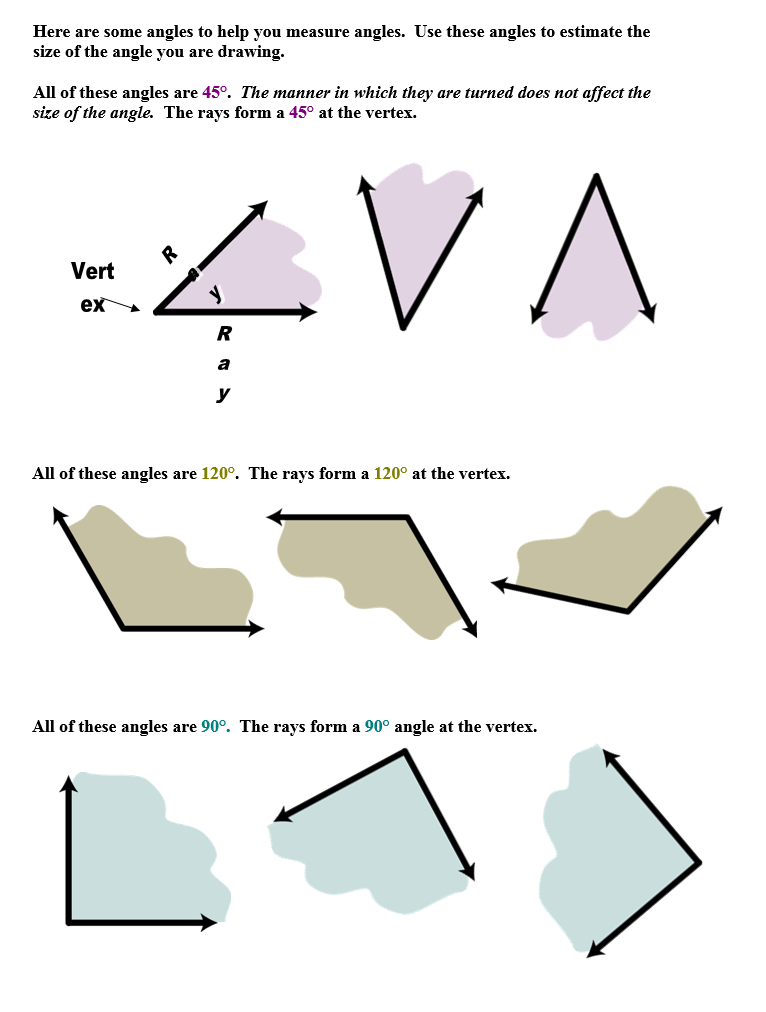 |
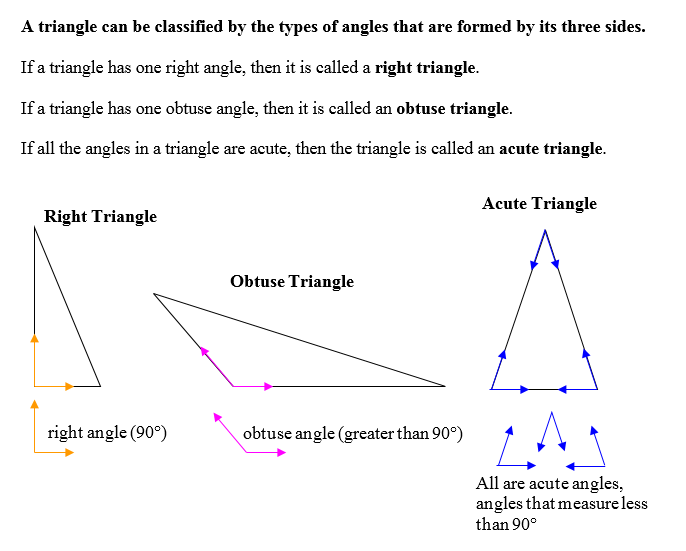 |
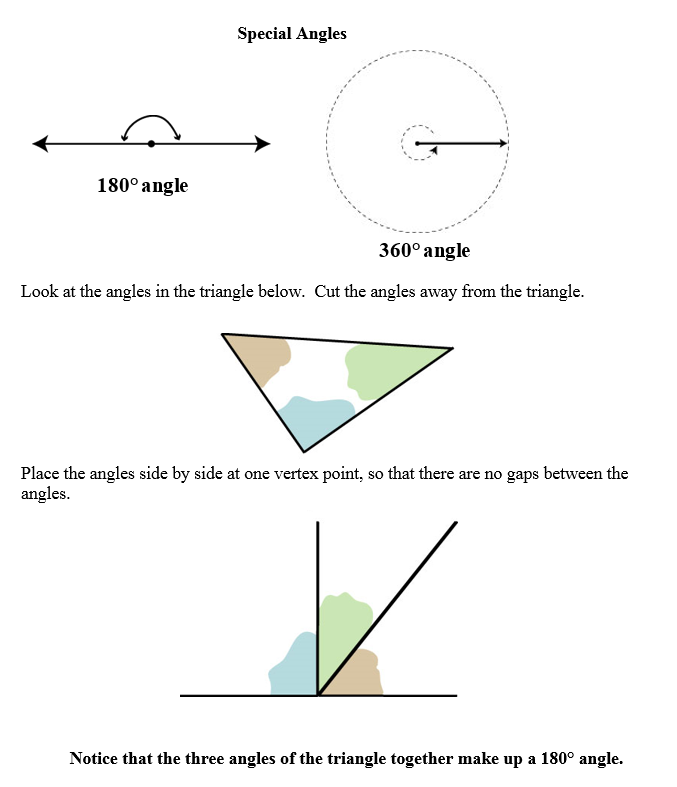 |
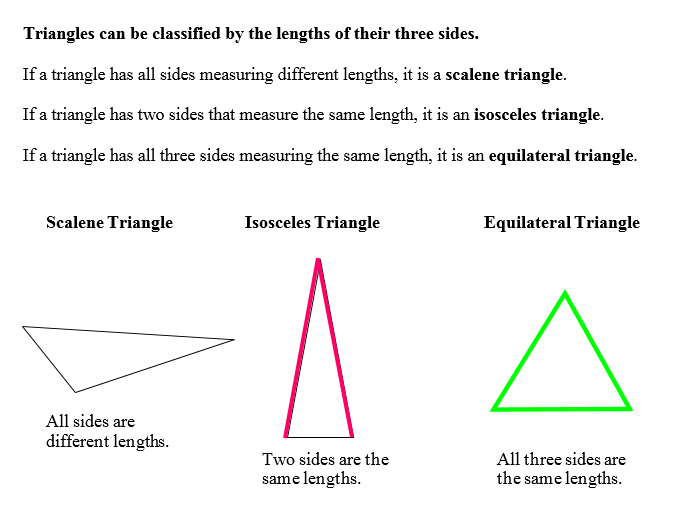 |
 |
| Unit 16 Triangles |
| Unit 16 Identify the Type for each Triangle Worksheet |
| Click here to watch the video about types of triangles. |
| Unit 16 Types of Triangles Activity |